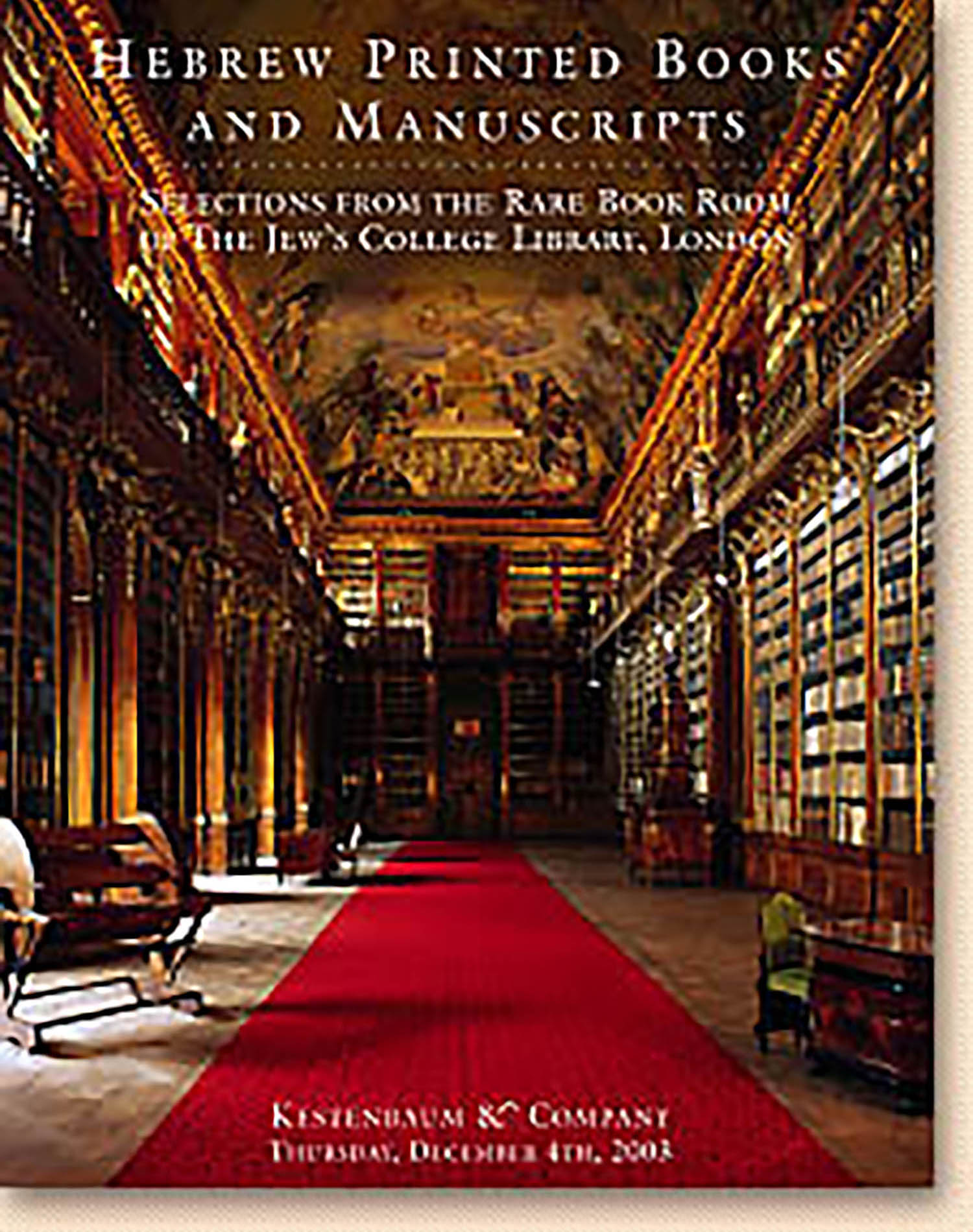Sepher HaChassidim [pietism]

AUCTION 21 |
Thursday, December 04th,
2003 at 1:00
Kestenbaum & Company Holds Inaugural Auction of Hebrew Printed Books & Manuscripts at Their New Galleries
Lot 122
JUDAH THE CHASSID.
Sepher HaChassidim [pietism]
Bologna: Silk Weaver’s Guild 1538
Est: $2,000 - $3,000
PRICE REALIZED $5,000
The fifth of only nine books printed by the Jewish Silk Weaver’s Guild. Several of the printers at this press are known by name: Sepher HaChassidim was printed by Abraham b. Moses Cohen. See Amram, The Makers of Hebrew Books in Italy, pp. 232-35; Ephraim Deinard, Atikoth Yehudah, p. 2.
Many of the passages in Sepher HaChassidim are homiletic and exegetic, explaining the philosophical or mystical meanings of Biblical verses and Talmudic sayings. Nonetheless, it is primarily a masterwork of ethical instruction, enjoining how to resist temptation and avoid sin; how to dress, speak, pray and work; how to choose a wife and select companions; how to harmonise the necessities of existence with the requirements of religious life; how to choose a righteous teacher, and many other subjects. No other Hebrew work of ethics devotes such close attention to detail, rendering it an important historical souce for the study of everyday Jewish life in medieval Germany.
For an extensive treatment of Ashkenazic Pietism see I. Marcus, Piety and Society: The Jewish Pietists of Medieval Germany (1981). See also H. Soloveitchik, “Three Themes in Sefer Hasidim,” AJS Review I (1976) pp. 311-357. Most recently Prof. Haym Soloveitchik has contended (as did Reifmann, Güdemann, and Marcus) that the Bologna edition of Sepher Hasidim actually consists of two separate and radically dissimilar works. Soloveitchik refers to chaps. 1-152 as “S.H. I,” and chaps. 153-1178 as “Sefer Hasidim.” Soloveitchik argues for a French provenance for S.H. I (most of the glosses contained therein are French not German). Only the second work, “Sefer Hasidim,” is truly representative of the teachings of the German pietists (Hasidei Ashkenaz). H. Soloveitchik, “Piety, Pietism and German Pietism: Sefer Hasidim I and the Influence of Hasidei Ashkenaz,” JQR, XCII, Nos. 3-4 (2002), pp. 455-493
